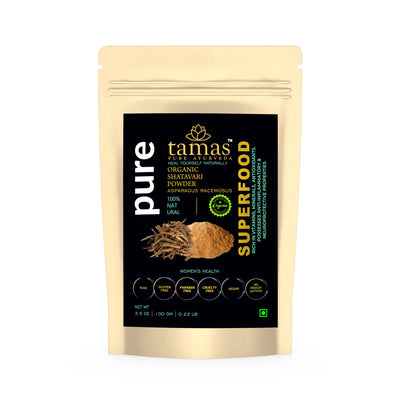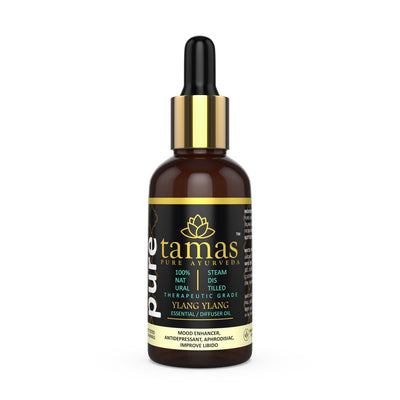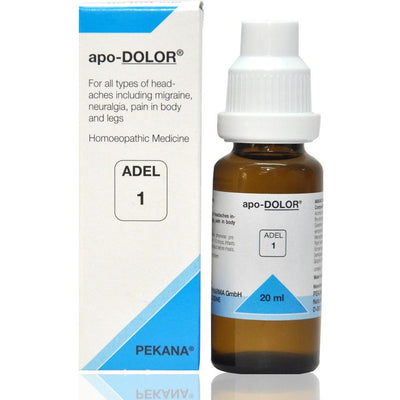
KM Lepam
Who doesn’t get headaches? One would have experienced a headache at some point in time or another. Studies have shown that nearly 70% of people experience some form of headache. Some people get a headache when the weather is cold. Others get a headache when they go in the hot sun. Some people experience headaches when they eat oily food. While some headaches may be mild, others can be so terrible that a person might find it difficult even to open one’s eyes. Headaches can be a major problem that can affect a person, even affecting one’s quality of life.
Causes of headaches
There are different types of headaches, each of which has its own cause. Some of the common headache types and causes are as follows:
Ayurveda's view on headaches
Ayurveda is the ancient Indian system of medicine that considers three types of doshas or energies present in the human body. These three doshas are Vata, Pitta, and Kapha. The science of Ayurveda believes that any disease or health problem occurs due to imbalances in the three doshas. In the same way, a headache occurs because of an imbalance in the doshas.
Ayurveda uses the concept of the three doshas to explain the types of headaches and the causes of these headaches. The three types of headaches under Ayurveda can be grouped as sinus headaches, tension headaches, and migraine headaches.
Sinus headache
According to Ayurveda, sinus headaches occur due to an imbalance in the Kapha dosha. Kapha is predominant in the spring season. The climate is moist and Kapha imbalance can lead to sinus cavities being inflamed. This can cause a headache. Apart from the weather, food-related to cold like fried foods, cold foods can also lead to lead to the Kapha imbalance.
Vata and Pitta type of persons also can experience sinus headaches. It happens when the sinuses become dry. The sinuses are present in the forehead, cheekbones and behind the nose. Inflammation can cause pressure and pain in these areas. Congestion in the head and a dull feeling leading to heaviness in the affected regions are the predominant symptoms.
Ayurveda recommends light exercise, going out in the fresh air, exposure to sunlight, and steam treatment to relieve blockages in the sinus. While undergoing steam inhalation, Nilgiri or eucalyptus oil can be used to provide relief. Steam inhalation ensures the passages in the nose are open and don’t get blocked.
Diet can be helpful for sinus headaches. Dry foods that make use of spices, are not deep-fried, and are light should be consumed. Ayurveda recommends spicy and bitter tastes in the diet.
Tension headache
Tension headaches are related to an imbalance in the Vata dosha. This headache occurs commonly and is related to lifestyle. A fast lifestyle with an improper diet, too much work, and stress can cause this type of headache. A hectic lifestyle makes a person skip food due to lack of time and work pressure. This affects the Vata, causing imbalance leading to a headache.
Stress, lack of proper sleep, straining the eyes due to excess exposure to the computer screen and mobile screen are causes of tension headaches. The headache is like a tight band around the head. The pain is sharp in nature. Pain can be experienced in the sides of the head too.
Tension headaches can be cured by following the right diet. Eating food at the right time daily and avoiding stimulants like coffee, tea, and alcohol is advised. One must drink sufficient water and consume warm, and wet cooked food. Dry and spicy foods should be avoided. A massage using an ayurvedic oil can be helpful in relieving symptoms.
Migraine headache
This is the most severe form of headache and is related to an imbalance in Pitta and Vata. When the Pitta dosha is imbalanced, it leads to pain that is sharp, severe and burning in nature. This type of headache increases sensitivity to light and one may even see flashes before the eyes. Vata imbalance can also cause migraines.
The problem can be seen on one side of the head and may cause a throbbing sensation. It may even lead to nausea. Toxins being accumulated and not being removed can cause migraine headaches. Stress, hot weather, too much exposure to computer screens, mobile, and television screens. Hormonal cycles in women can also cause migraines.
Migraine can be treated by changing one’s lifestyle. Following the early to bed and early to rise philosophy and getting adequate fresh air is recommended. Warm, cooked foods with spices are recommended in the diet. Avoiding cold and dry foods and bitter tastes are advised. Deep breathing exercises and warm oil massages are recommended.
KM Lepam is a calming balm to help soothe the symptoms of a headache
KM Lepam is an ayurvedic analgesic product that is very helpful in treating headaches. It is a headache relief balm that can be used to help deal with different types of headaches. When the pain from a headache is unbearable and headaches become regular, medication will be required. This is where KM lepam is of great help.
This cream is to be applied to the areas on the head where there is severe pain. It is a migraine balm that is highly useful to treat recurring migraines. During a migraine attack, this headache balm can be applied to the area affected after which it should be massaged gently. It is important that the massage is done gently for a few minutes.
Massage after applying the cream can help provide quick relief from symptoms. It should be applied twice or thrice a day for the best results. The cream is anti-inflammatory and is antiarthritic.
Ingredients
KM Lepam is a cream that uses ingredients that act as a natural analgesic and help to treat headaches. A mixture of five different ingredients has been carefully selected to create this naturally sourced ayurvedic balm for headache. The source of this popular remedy for headaches is a traditional medicine known as Karuthi maramni gulika. Gulika is a tablet that is powdered, made as a paste and applied on the head.
The ingredients that this head pain balm has are:
Who doesn’t get headaches? One would have experienced a headache at some point in time or another. Studies have shown that nearly 70% of people experience some form of headache. Some people get a headache when the weather is cold. Others get a headache when they go in the hot sun. Some people experience headaches when they eat oily food. While some headaches may be mild, others can be so terrible that a person might find it difficult even to open one’s eyes. Headaches can be a major problem that can affect a person, even affecting one’s quality of life.
Causes of headaches
There are different types of headaches, each of which has its own cause. Some of the common headache types and causes are as follows:
- Headache can be a result of the side effects of medicine taken.
- Headache can be a secondary headache caused by some other condition. Meningitis and brain tumors can lead to headaches.
- Neck pain and headaches can occur due to problems in the spinal disk near the neck.
- Sinus headaches occur when the sinus cavities in the facial region are inflamed. This can cause a severe headache with pressure on the sides of the head.
- Tension headaches occur mainly due to stress. It can also be a result of bad posture. It causes a tight feeling on the head.
- Migraine headache is one of the worst types of headaches leading to unbearable pain in the head. Migraines can run in the family and can increase the risk of developing a migraine.
- Exercise headaches are caused during or after an exercise session.
- Sleep headaches occur as a result of a lack of proper sleep.
- Headaches can occur because of eyestrain. In today’s time, it happens due to overexposure to computer, mobile, and television screens.
- Allergic headaches can occur as a result of an allergy to a food or drink consumed.
Ayurveda's view on headaches
Ayurveda is the ancient Indian system of medicine that considers three types of doshas or energies present in the human body. These three doshas are Vata, Pitta, and Kapha. The science of Ayurveda believes that any disease or health problem occurs due to imbalances in the three doshas. In the same way, a headache occurs because of an imbalance in the doshas.
Ayurveda uses the concept of the three doshas to explain the types of headaches and the causes of these headaches. The three types of headaches under Ayurveda can be grouped as sinus headaches, tension headaches, and migraine headaches.
Sinus headache
According to Ayurveda, sinus headaches occur due to an imbalance in the Kapha dosha. Kapha is predominant in the spring season. The climate is moist and Kapha imbalance can lead to sinus cavities being inflamed. This can cause a headache. Apart from the weather, food-related to cold like fried foods, cold foods can also lead to lead to the Kapha imbalance.
Vata and Pitta type of persons also can experience sinus headaches. It happens when the sinuses become dry. The sinuses are present in the forehead, cheekbones and behind the nose. Inflammation can cause pressure and pain in these areas. Congestion in the head and a dull feeling leading to heaviness in the affected regions are the predominant symptoms.
Ayurveda recommends light exercise, going out in the fresh air, exposure to sunlight, and steam treatment to relieve blockages in the sinus. While undergoing steam inhalation, Nilgiri or eucalyptus oil can be used to provide relief. Steam inhalation ensures the passages in the nose are open and don’t get blocked.
Diet can be helpful for sinus headaches. Dry foods that make use of spices, are not deep-fried, and are light should be consumed. Ayurveda recommends spicy and bitter tastes in the diet.
Tension headache
Tension headaches are related to an imbalance in the Vata dosha. This headache occurs commonly and is related to lifestyle. A fast lifestyle with an improper diet, too much work, and stress can cause this type of headache. A hectic lifestyle makes a person skip food due to lack of time and work pressure. This affects the Vata, causing imbalance leading to a headache.
Stress, lack of proper sleep, straining the eyes due to excess exposure to the computer screen and mobile screen are causes of tension headaches. The headache is like a tight band around the head. The pain is sharp in nature. Pain can be experienced in the sides of the head too.
Tension headaches can be cured by following the right diet. Eating food at the right time daily and avoiding stimulants like coffee, tea, and alcohol is advised. One must drink sufficient water and consume warm, and wet cooked food. Dry and spicy foods should be avoided. A massage using an ayurvedic oil can be helpful in relieving symptoms.
Migraine headache
This is the most severe form of headache and is related to an imbalance in Pitta and Vata. When the Pitta dosha is imbalanced, it leads to pain that is sharp, severe and burning in nature. This type of headache increases sensitivity to light and one may even see flashes before the eyes. Vata imbalance can also cause migraines.
The problem can be seen on one side of the head and may cause a throbbing sensation. It may even lead to nausea. Toxins being accumulated and not being removed can cause migraine headaches. Stress, hot weather, too much exposure to computer screens, mobile, and television screens. Hormonal cycles in women can also cause migraines.
Migraine can be treated by changing one’s lifestyle. Following the early to bed and early to rise philosophy and getting adequate fresh air is recommended. Warm, cooked foods with spices are recommended in the diet. Avoiding cold and dry foods and bitter tastes are advised. Deep breathing exercises and warm oil massages are recommended.
KM Lepam is a calming balm to help soothe the symptoms of a headache
KM Lepam is an ayurvedic analgesic product that is very helpful in treating headaches. It is a headache relief balm that can be used to help deal with different types of headaches. When the pain from a headache is unbearable and headaches become regular, medication will be required. This is where KM lepam is of great help.
This cream is to be applied to the areas on the head where there is severe pain. It is a migraine balm that is highly useful to treat recurring migraines. During a migraine attack, this headache balm can be applied to the area affected after which it should be massaged gently. It is important that the massage is done gently for a few minutes.
Massage after applying the cream can help provide quick relief from symptoms. It should be applied twice or thrice a day for the best results. The cream is anti-inflammatory and is antiarthritic.
Ingredients
KM Lepam is a cream that uses ingredients that act as a natural analgesic and help to treat headaches. A mixture of five different ingredients has been carefully selected to create this naturally sourced ayurvedic balm for headache. The source of this popular remedy for headaches is a traditional medicine known as Karuthi maramni gulika. Gulika is a tablet that is powdered, made as a paste and applied on the head.
The ingredients that this head pain balm has are:
Shallaki
|
Kumari
|
Tugaksheeri
|
Madhucheesti
|
Karpoora
|
You may also like
More from Kerala Ayurveda
More from Aasaan
Recently viewed

















